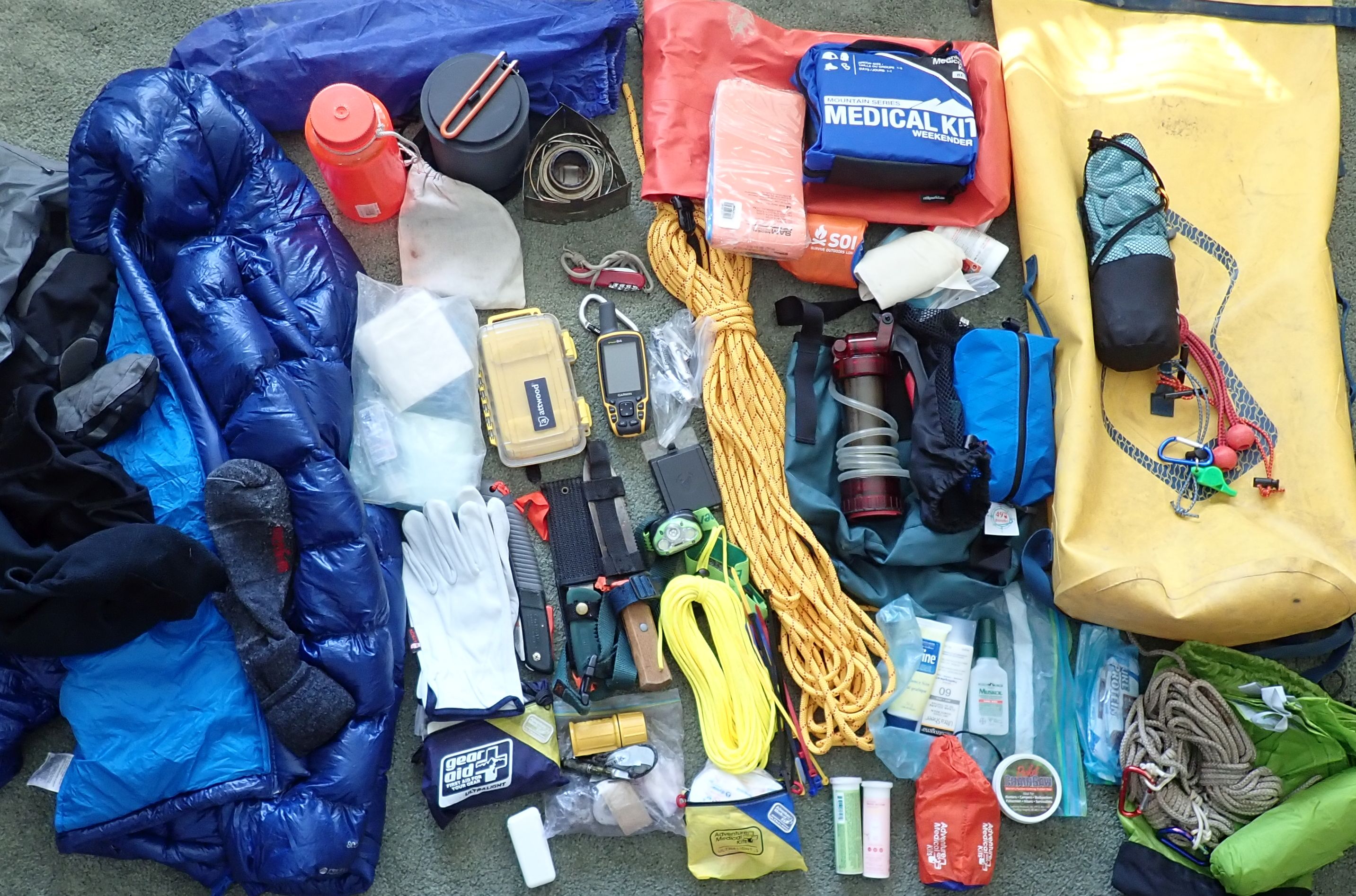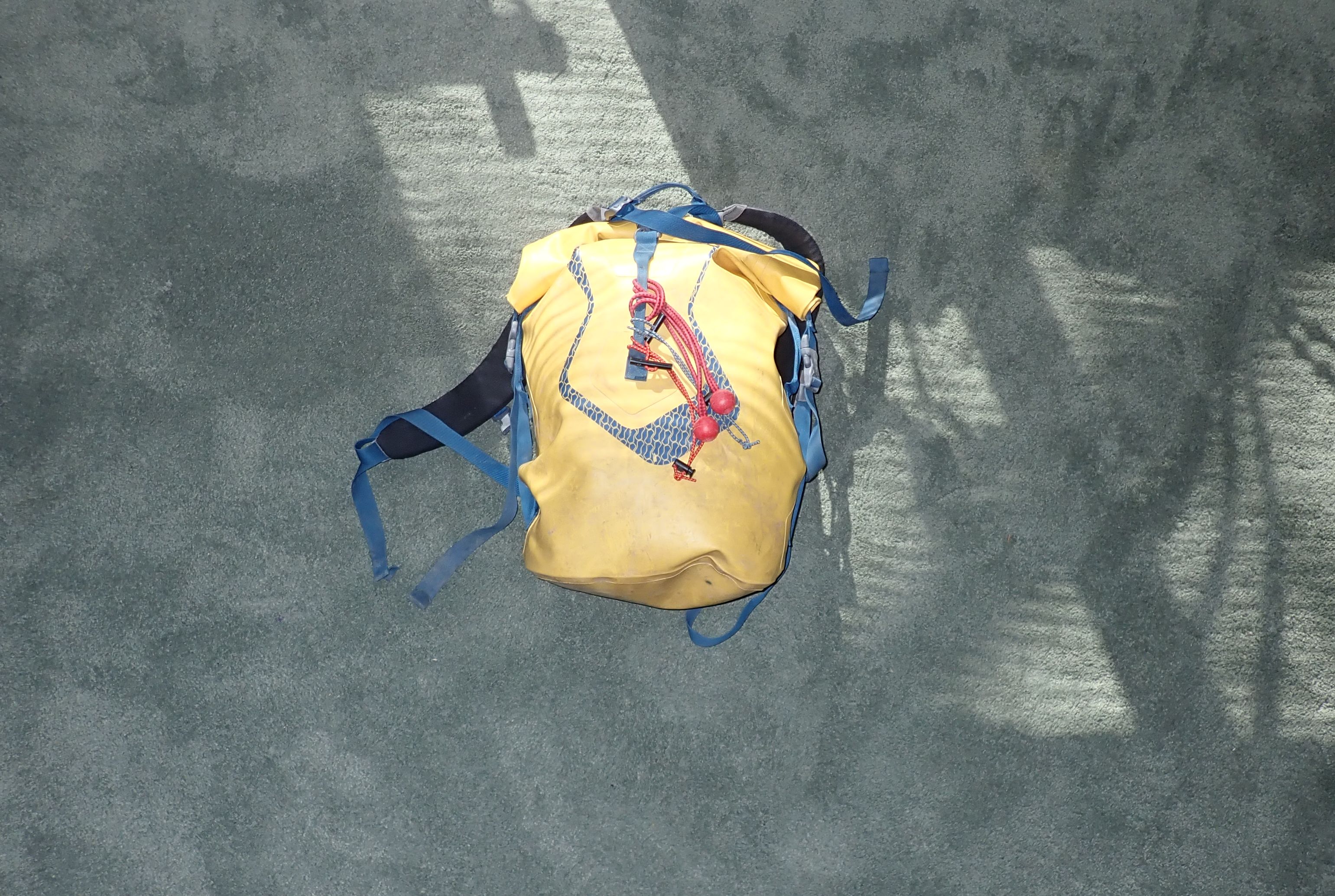Navigation and Communication
- Cell Phone. This is the primary tool for most people that may require support and rescue, or just communication. A cell phone also allows for contacting when arriving and leaving places. There is not complete coverage in many places that people paddle or hike. An alternative is looking at using a SPOT or InReach device. Remember to leave a float or hike plan with a responsible party, include when you are leaving, returning and the number (and people) in your party.
- Compass. Understand the use of a compass is important, along with keep track of handrails or other exit points when hiking or out in the wilderness.
- GPS.* A GPS is a very useful tool to have and keep track of your location even with built in maps. Many phone or mobile devices support GPS location as well. It is important to remember that as an electronic device power and damage may be a concern. If you are travelling in an area were you are not familiar having hard copy maps and compass is recommended.
Food and Water
- 1L Water Bottle. Keeping hydrated and having easily avilable water is important for any time out. I would consider a 1L nalgene (or similar) as a minimum. Remember if you are with a group then each person should have water.
- Water Purification.* (MSR Pump or Gravity Filter) Having a way to obtain clean water, especially if there is a delay returning or there is a questionable water source. I also carry AquaTabs as part of my first aid/safety kit providing alternatives. Depending on the conditions I will either take a pump filter or gravity feed filter.
- Energy Bars. If there is a delay or and emergency having some extra high energy food is an important part of my bail bag. I should not that these is emergency rations and plans for regular meals should not rely on the content of your emergency plan (Bail Bag).
Fire
- Wind proof matches, and a lighter. Matches are my go to solution - I have started carrying light anywhere 'Storm' matches but when things get yucky having a lighter and be a god send. Lighters don't work well in the cold - try carrying it in your pocket for a bit to warm and vaporize the fuel.
- Ferro Rod. When matches just don't work your trusty Ferro Rod and striker comes to the rescue. I have several on my PFD and in my Bail Bag just to be sure. I do recommend that you practise at home since getting a spark in the right place can be tricky.
- Vaseline cotton balls and other easy light material. Cotton balls with just a little petroleum jelly rolled in work great as a fire starter. I keep several in a small plastic bag and when I need a quick light I fluff up the cotton and strike. If I have matches then I will use another fire starter - may go to is the classic egg carton filled with dryer lint and wax.
- Stick Stove* This is a small metal holder that acts as both a wind screen and small fire place. These are very handy when you just need a small fire for cooking/warming, or you don't have a good surface for building a fire. Mine comes as multiple pieces of laser cut steel that clip together. Just like my cook stove I don't carry this unless I am going a little further afield.
General Equipment and Maintenance/Repairs
- Pocket Chain Saw. This looks like a bike chain with teeth that has holes on each end. It fits into a small can - it is reasonably easy to use, and will cut through fairly large pieces of wood. Practise before you need to use it in an emergency.
- Folding Pruning Saw* I carry a folding saw almost all the time now - it is easy to use and cuts quickly. It is somewhat limited to the diameter of the wood, but then in emergency situation typically you will only be using small wood anyway.
- Swiss Army Knife (Standard). I carry a standard pocket knife all the time for small and medium tasks that require a knife. Likely carrying a multi-tool with a knife, pliers and screw driver would be a better option but the traditionalist in me like the pocket knife.
- Sheath knife and Digging Knife (trowel). Having a larger sheathed knife is very useful for many related activities but for me it also balances out the Digging knife on my belt. The Japanese Digging knife is a wonderful tool for everything from cat holes to clearing an area for a fire, and removing lichens for later identification.
- Elastic Toggles. These are just an elastic cord with a ball or toggle - they are very handy for temporary attachment for all kinds of purposes.
- Leather gloves. I carry a pair of gloves to protect my hands. My preference is leather rather than a synthetic which may be damaged by heat.
- Light weight repair kit - thread, needles, buckles, A & B type patches, grommets, duck tape. I have been so glad I carry this kit with me - it started off as a simple store bought kit and over time I have added better needles, more thread, and better stick-on patch material. I always add a curved needle to my field sewing kits along with a canvas or sail needle for surface or larger/stiffer material.
- Dental Floss (waxed). I use this for sewing primarily - it is strong and easy to pull through most material. It is heavier than most threat normally in kits so you need a larger material.
- Zip-Ties. I always bring a bundle of these as they provide temporary connectors for all kinds of tasks.
- Spare batteries.* With GPS and Lights I have spare batteries available in the correct size.
- Spare garbage bags. I am often picking up garbage that has been left behind by others so I try to keep one or two large black garbage bags in my Bail Bag. If nothing else these can be used as emergency rain shelter or jacket.
|
Camp and Shelter
- Parachute Cord. Light weight cord that is strong is useful in all kinds of purposes - from binding broken tent poles or equipment, to rigging for tarps and clothes lines.
- Rope. I take a good length of light weight rope for use around camp, lining, tying up equipment, painters on canoes, tie downs for the car.
- Tarp and rigging. I carry a light weight SilNylon Scout tarp from MEC, it is small size (2m x 3m) but it has done well over time. When out with a larger group I have a larger guide tarp but it is heavier and not nearly as small (PU coated nylon) so it doesn't go out for normal outings.
- Bothy Bag (for four). A bothy bag is a temporary shelter that is very light/compact, it is shaped like a fitted sheet that you flip over your head and then sit on the waterproof edge. It is small but will quickly provide temporary shelter from the elements.*
- Head Lamp. I always have a head lamp even if I expect to only be out for the day. This provides more options if something happens and I am delayed.
- Small post set, Trangia stove, stand, alcohol fuel for a meal*Although I don't always take a stove, the light weight alcohol stove and small pot set provides enough for tea or soup. The Bail Bag is for emergency delays so I am not setup for longer time periods - if that is the case the stick stove will come into play.
- TP - I keep two rolls of TP in two separate water proof bags - you never know.
Warmth
- Mylar Bivy Bag. This provides a warming option or emergency shelter for one person. I carry an additional emergency bivy in the group first aid kit so there are two, and with the tarp there are multiple options for getting out of the cold and wet.
- Towel*
- Chemical hand/toe warmers.* I usually only carry these in the winter and shoulder seasons. They should be checked every season since they can expire - if they are hard to the touch they probably will not work.
- Down jacket, spare mitts/hat/wool socks.* In the winter and shoulder season having a good warm jacket and spare hat/mitts/socks is critical for protection from the environment if you need to stop. I keep these in a separate waterproof stuff sack inside my Bail Bag to ensure it is dry when needed.
First Aid and Safety
- Nitrile gloves. If you ever need to clean up after someone this are really useful. I didn't carry extras until 2019 when I came acros
- Group First Aid Kit*. (Family Series - Adventure Medical Kit with additions). When leading a group a properly stocked and waterproof First Aid kit is a mandatory requirement. This is moderately large so I don't aways take it when going alone or in a small group, or when I am not the leader.
- Whistle. I keep a whistle attached to the the shoulder strap in case notification is required.
- TP (yes this is repeated)
- Hand sanitizer. I keep at least one small bottle in with one of the TP rolls. If I remember I try to have two bottles available.
- Hydration tablets. I carry a set of AquaTabs in my small first aid kit - these rarely get used so I check the expiry at least yearly. One table disolves in 1L to kill viruses and other bacteria. The water should be clear, expect to wait at least 20 minutes for the tablets to work. Unclear water or cold temperatures will extend the time required.
- Sun screen. I am always amazed at the number of people that don't bring sunscreen (and then need it).
- Insect repellent. An unexpected overnight stay can be really miserable if you are not prepared for the bugs.
- Vaseline. Lubricant and fire starter.
- Light weight first aid kit -- liquid Band-Aid, Band-Aids, clippers, scissors, tick tweezers, Aqua Tabs, surgical tape. This small kit always goes with me, the larger kit may not be available on all of my trips.
- Liquid soap*. I don't usually carry liquid soap but it is my list for when I am going out with a group. This provides more options for washing up if necessary, rather than hand sanitizer.
|



